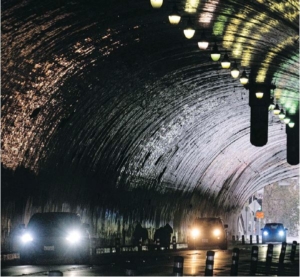Electric cars, headlights, roundabouts

Some drivers of smaller cars find bright headlights of larger SUVs blinding.
The move to technologically advanced motor vehicles is beyond the initial stages and full on throughout many parts of North America. My recent California trip was proof beyond any doubt — one could not go more than a block or so in a downtown area without seeing a hybrid, full electric or partial combination of both. It was even easier to spot them on every state freeway.
Alan had a choice between a conventional automobile and a full electric. He chose the latter. It’s a decision more and more people are making. His purchase was about the same capital cost as his wouldhave-been buy, but a fraction of the operation cost, with significant overall cost reduction.
Conversely, Joan is not convinced of the advantages and is more concerned with the environmental costs.
She wonders about the disposal of batteries. Are they going to the landfill or are there opportunities to recycle? What is the cost of new hydroelectric power projects needed to serve the market?
Is there a lithium shortage that limits the manufacturing capacity? What of the CO2 emissions in the mining process? She drives a conventional compact vehicle.
Regardless of one’s position, electric vehicles, whether full or partial, are here to stay and will be an appreciable portion of the marketplace.
Bright headlights are a hazard! Several readers have requested a comment on this ever-increasing problem. It is more dramatic, since the SUV market has seen remarkable growth. Passenger cars sit much lower and their drivers are prone to be easily blinded by oncoming traffic.
Mike maintains only a five per cent positive-road-grade difference will blind an oncoming driver for up to five seconds.
At least one North American vehicle manufacturer is planning to discontinue passenger-car production because of the popularity of SUVs. Federal import rules seem to be ignored with the growing number of vehicles equipped with high-intensity lights. More to come on this issue.
Cher wanted to get a reason for having to give way to a group of vehicle drivers at a standard traffic circle, when it was obviously her right-of-way.
If an arterial road meets a minor road, the major road users often proceed in some sort of wagon train group, mistakenly assuming the right-of-way over those who have arrived first and should legally proceed.
Traffic circles have one lane. This happens at neighbourhood diverters as well. There seems to be a strength-in-numbers mentality, as opposed to a regulatoryregime adherence.
First come, first served should be the driving protocol. Zipper merging is preferred over a bigger-is-better motoring credo.
Delay of pedestrian movement at signalized intersections is now a common occurrence in large municipalities. It works well at not only intersections with advance left turns but also for advance-right-turn intersections. Most all cities embrace the former but not the latter.
When will cities in Canada embrace the left U-turn, with pedestrian hold back at large intersections? This keeps the traffic moving. There are all sorts of measures that governments can take to do so.
But what if the opposite is true? Could there be measures designed to encumber passengervehicle travel in favour of other modes?
More to come on this.
Steve Wallace is the owner of Joan Wallace Driving School on Vancouver Island. He is a former vice-president of the Driving Schools Association of the Americas, a registered B.C. teacher and a University of Manitoba graduate.


